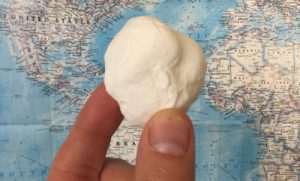Geodesy is the study of the size and shape of the Earth (or any planet), its magnetic field, topology, and orientation in space. It is a branch of earth science and applied mathematics, and makes use of statistical methods.
Geodesy is also known as geodetics, geodetics engineering or geodetic engineering.
Geodesy Models

Geodetic Reference System
The geodetic reference system is a way of tagging or referencing every single point on the Earth with information that describes its location and, to a certain extent, its physical properties.
It is defined this way: “a complete reference system for positioning a point on the earth, including datum, co-ordinate description, co-ordinate system and possibly a projection” (OECD, 2005).
Statistics and Geodetics
Statistics are an integral part of all geodetics research. Statistical methods such as inference are used to nail down the most accurate and realistic solution to mapping problems involving angles, distances, and coordinates.
When analyzing data, statistical methods are also used to determine which measurements are outliers and which are reasonably accurate and likely to be precise and realistic. Observations in geodesy are usually normally distributed, which makes such outlier analysis relatively straightforward.
Importance of Geodesy
Geodesic studies are important in large scale building projects, land surveys, and making maps. The modern navigation systems used by airplanes and ships depends completely on geodesy. Other scientists — geologists, meteorologists, and oceonographers, for example — also use geodetics to better understand what is happening on, under, and inside the Earth.
The Dynamic Nature of Geodesy
Because the Earth’s crust is constantly changing, geodetics engineering is not a ‘once and done’ branch of science. Below the dozen or so plates which cover the earth is a sea of molten rock, on which the plates ‘float’; and the surface of the earth changes as it travels in the moon and sun’s changing gravitational fields. This rising and falling of the surface can be as much as 30 centimeters a day. Through geodetics we can keep track of and even predict these changes.
References
OECD (2005). Geodetic Reference System. Retrieved October 20, 2017 from: https://stats.oecd.org/glossary/detail.asp?ID=6245